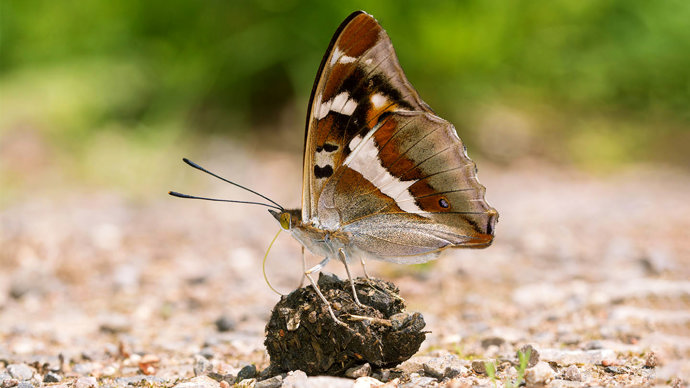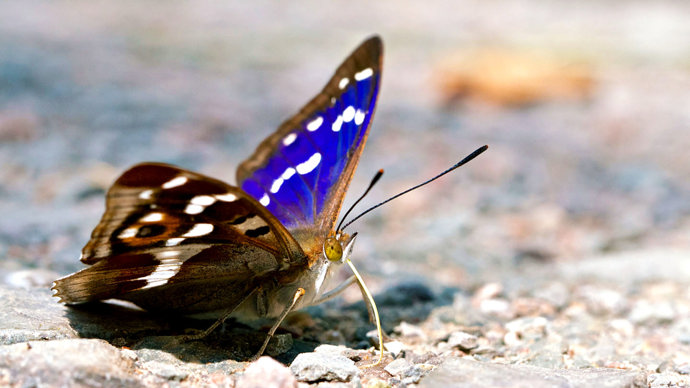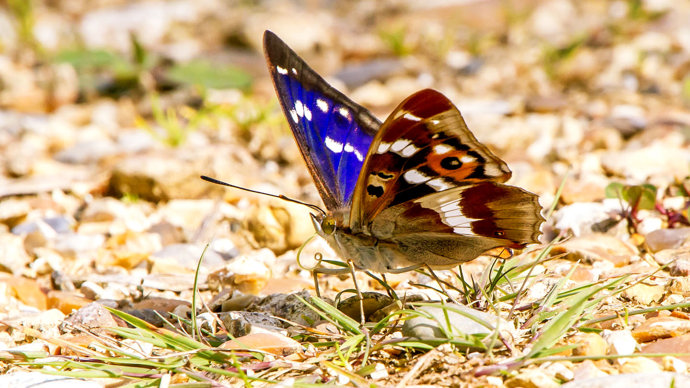Common name: purple emperor
Scientific name: Apatura iris
Family: Nymphalidae
Habitat: tree canopies in oak woodland
Caterpillar foodplant: goat willow
Predators: birds and mammals
Origin: native
Despite its exotic appearance, the purple emperor is as typical of UK woodland as the mighty oak. It’s elusive and beautiful, but has quite the unsavoury appetite.
Common name: purple emperor
Scientific name: Apatura iris
Family: Nymphalidae
Habitat: tree canopies in oak woodland
Caterpillar foodplant: goat willow
Predators: birds and mammals
Origin: native
Caterpillars: bright green with yellow spots and diagonal yellow lines along sides. They also have prominent, horn-like protrusions on their heads.
Adults: large and dark with white banded wings. Males have an iridescent purple sheen to their upper wings, while females are brown. It is the second largest butterfly in the UK (only the swallowtail is larger). Males are the size of a small bird.
Wingspan: 7.5-8.4cm.

Credit: Gillian Pullinger / Alamy Stock Photo
Caterpillars: goat willow is the preferred food plant. Caterpillars are active at night.
Adults: aphid honeydew and tree sap are the main food source, though they also come to ground to feed on animal dung and carrion for salts and minerals.
Male purple emperors are very aggressive. They will fiercely protect their territory from intruding rivals and unsuspecting passing butterflies.
During July, males congregate on particularly tall ‘master trees’ awaiting mates. The same trees can be used year after year. Females either couple up with a male or swoop to the ground as a signal that they have already mated.
Eggs are laid on goat willow or grey willow leaves. Hatched larvae are well camouflaged with the midrib of the leaves. The caterpillars overwinter in forks in willow twigs then pupate in the summer.

Credit: John Murray / WTML
They are extremely elusive and are found in small numbers over large areas, mainly in oak woodland in southern England. Despite a decline in the 20th century, it seems the purple emperor may be expanding its range again, even into suburban areas. South-central England is still prime territory, though.
Purple emperor males are affectionately called ‘His Majesty’ by butterfly enthusiasts.
It can be spotted between July and August. Butterfly enthusiasts have been known to try to lure males down from the canopy with tempting treats such as banana skins and shrimp paste.

Credit: James Langiewicz / WTML
The decline of the purple emperor is thought to have been caused by the widespread and large-scale loss and fragmentation of ancient woodland, as well as the 'tidying' of areas of goat willow.
Purple emperor caterpillars overwinter as they mature, changing from a bright green larva to darker brown.